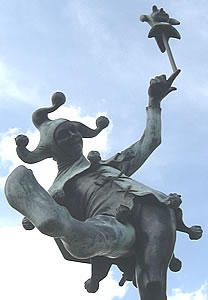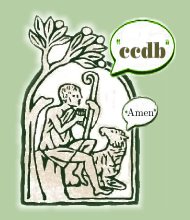Reasonable March to God-free Public Living Continues
The SCOTUS has spoken again. Don't let your public displays on public property be too overtly and solely "religious". We'll find it unconstitutional. Don't try to hide the cornerstone of our Judicial power--the 14th ammendment. We will make certain that you know who your masters are. We are the Law: SCOTUS has spoken.
Unfortunately, SCOTUS makes clear that the rights the Founding Fathers protected in the Bill of Rights apply only to the extent that Government says. Thus, self-evident though they are, these rights will operate if the State approves. But what if the State should be politically influenced by an extreme minority with an extreme agenda? What protections may the people enjoy from the capriciously enacted authority of such a State? SCOTUS does not answer. Nor do the Justices make clear the line in which religious displays cross the prohibition of the Establishment clause. Note Justice Souter's ambiguity in his majority opinion:
Writing for the majority in the Kentucky case, Justice David Souter upheld lower courts that found the counties' purpose in authorizing the displays in 1999 was religious, and that they were designed to be "an active symbol of religion (stating) 'the religious duties of believers.'"
Though after losing lawsuits the counties twice amended the displays to incorporate other texts of historic significance and adapted their statements of purpose, Souter said those changes were presented "only as a litigating position." He noted that earlier statements "were not repealed or otherwise repudiated."
"No reasonable observer could swallow the claim that the counties had cast off the objective so unmistakable in the earlier displays," Souter wrote. After describing elements of the amended county displays he found puzzling, such as the inclusion of a patriotic anthem but the omission of the 14th Amendment to the Constitution, on citizenship rights ("the most significant structural provision adopted since the original framing"), he concluded: "If the observer had not thrown up his hands, he would probably suspect that the counties were simply reaching for any way to keep a religious document on the walls of courthouses constitutionally required to embody religious neutrality."
No, there shall be no "Active symbols of religion" in the public square. There shall be no "religious duties of believers" posted for all to see. None of that now; what would our Reasonable atheist friends say?
The Ten Commandments summarize the principles that all successful civilizations have practiced throughout history. They represent the centrality of the Rule of Law and the cornerstone of Human Rights. They establish the boundaries that any truly moral people need to meet in order to further the good of society. Perhaps that's why they're too much of an active symbol for the Court. After all, this is the same Court that ruled in Casey v. Planned Parenthood, 505 U.S. 833 (1992):
Our law affords constitutional protection to personal decisions relating to marriage, procreation, contraception, family relationships, child rearing, and education. These matters, involving the most intimate and personal choices a person may make in a lifetime, choices central to personal dignity and autonomy, are central to the liberty protected by the Fourteenth Amendment. At the heart of liberty is the right to define one's own concept of existence, of meaning, of the universe, and of the mystery of human life. Beliefs about these matters could not define the attributes of personhood were they formed under compulsion of the State.
In light of this precedent, the Court is determined to continue the constitutional justification of the Absolute Individual. Any mandate for any one to observe morality that originates in any source other than the Individual's own consideration may not be tolerated if it's placed even in a courthouse. The Reasonable march further into the Quicksand of Secular Relativism. Who will pull them out?





















<< Home